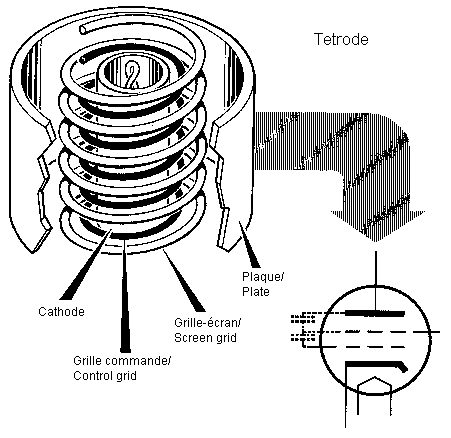
Back to home page
Back to audio
electronics page
Back to initiation page
The tetrode was invented to reduce the inter-electrodes
capacitances.
Particularly the plate to grid capacitance is responsible at high
frequencies of a feedback from the plate to the grid. Phase
rotations occur in this feedback giving instabilities and
auto-oscillations.
The other capacitances shunt the grid to ground limiting the
bandwidth.
knowing that two capacitors serially connected have a lower
capacitance than one alone, a second grid was added between the
control grid and the plate.
This screen grid is large and ported to a high constant voltage
(except in the ultra-linear schematic) close to the plate
voltage.

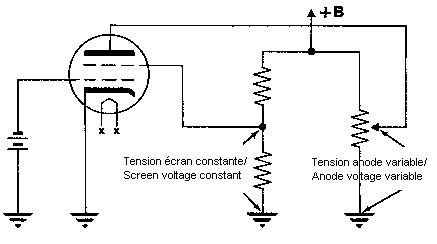
The screen voltage is adjusted by a voltage divider.
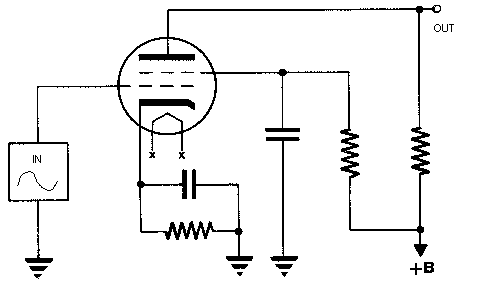
Simple stabilization of the screen voltage by adding a capacitor.
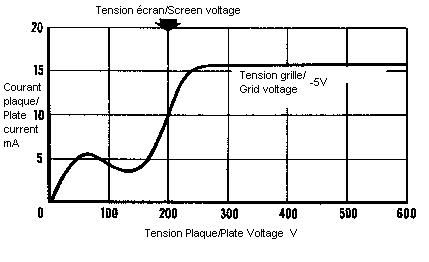 |
Aspect of a Ip/Up curve for a constant grid voltage. This curve is highly non-linear for plate voltages close and lower than the screen voltage (200V). The screen absorbs a non negligible part of the total current instead of the plate. |
Over a large plate voltage range, the plate current varies only very few. This is due to the screen that protects the plate from the cathode space charge.
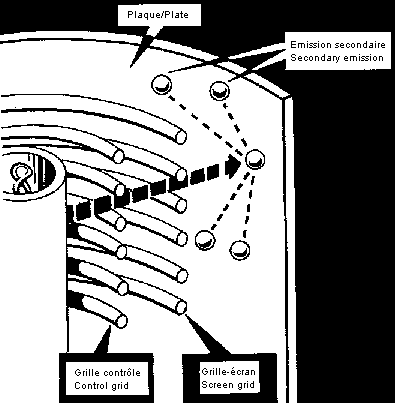 |
When an electron hits the plate with sufficient speed and force, it provoques the dispersion of several other electrons from the plate. This phenomenon is known as the secondary emission. The pentode will be invented to reduce this effect. |